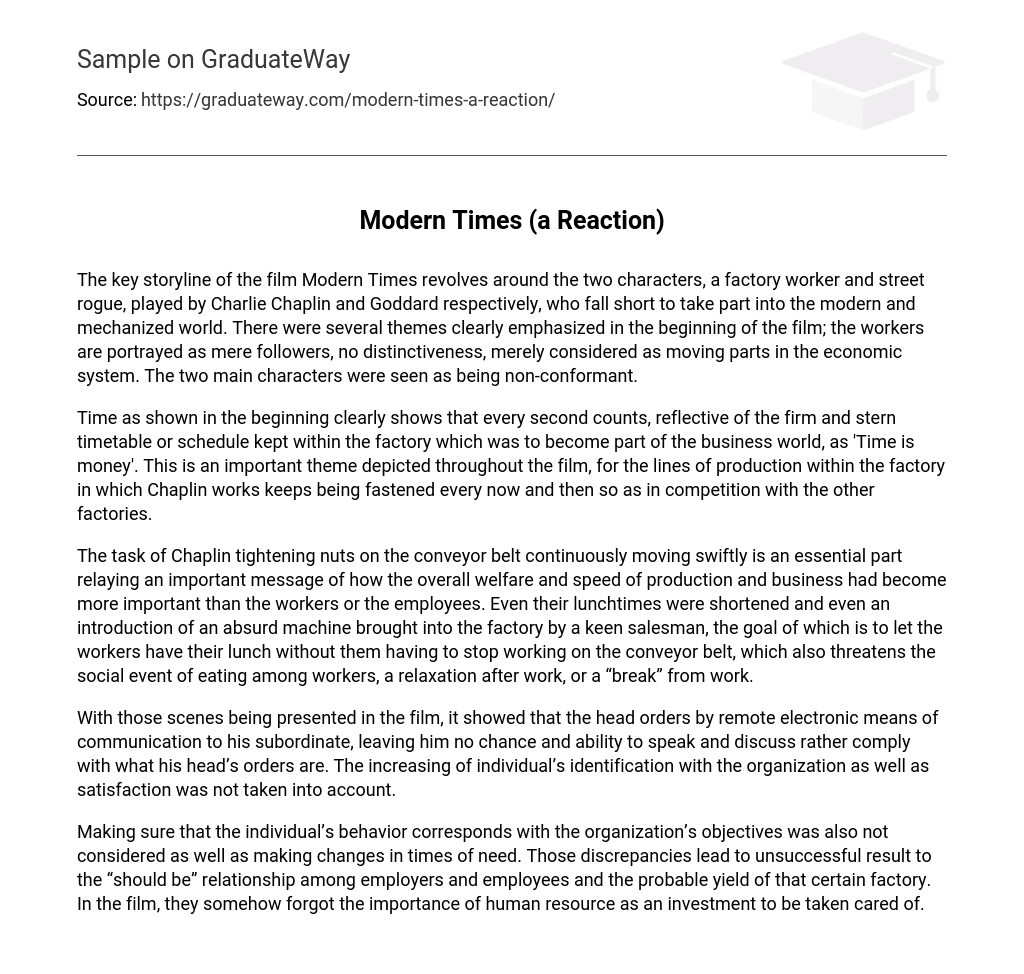The key storyline of the film Modern Times revolves around the two characters, a factory worker and street rogue, played by Charlie Chaplin and Goddard respectively, who fall short to take part into the modern and mechanized world. There were several themes clearly emphasized in the beginning of the film; the workers are portrayed as mere followers, no distinctiveness, merely considered as moving parts in the economic system. The two main characters were seen as being non-conformant.
Time as shown in the beginning clearly shows that every second counts, reflective of the firm and stern timetable or schedule kept within the factory which was to become part of the business world, as ‘Time is money’. This is an important theme depicted throughout the film, for the lines of production within the factory in which Chaplin works keeps being fastened every now and then so as in competition with the other factories.
The task of Chaplin tightening nuts on the conveyor belt continuously moving swiftly is an essential part relaying an important message of how the overall welfare and speed of production and business had become more important than the workers or the employees. Even their lunchtimes were shortened and even an introduction of an absurd machine brought into the factory by a keen salesman, the goal of which is to let the workers have their lunch without them having to stop working on the conveyor belt, which also threatens the social event of eating among workers, a relaxation after work, or a “break” from work.
With those scenes being presented in the film, it showed that the head orders by remote electronic means of communication to his subordinate, leaving him no chance and ability to speak and discuss rather comply with what his head’s orders are. The increasing of individual’s identification with the organization as well as satisfaction was not taken into account.
Making sure that the individual’s behavior corresponds with the organization’s objectives was also not considered as well as making changes in times of need. Those discrepancies lead to unsuccessful result to the “should be” relationship among employers and employees and the probable yield of that certain factory. In the film, they somehow forgot the importance of human resource as an investment to be taken cared of.





